Thilde Jensen documents homelessness in America through her powerful four-year project, currently on show at Martin Parr Foundation
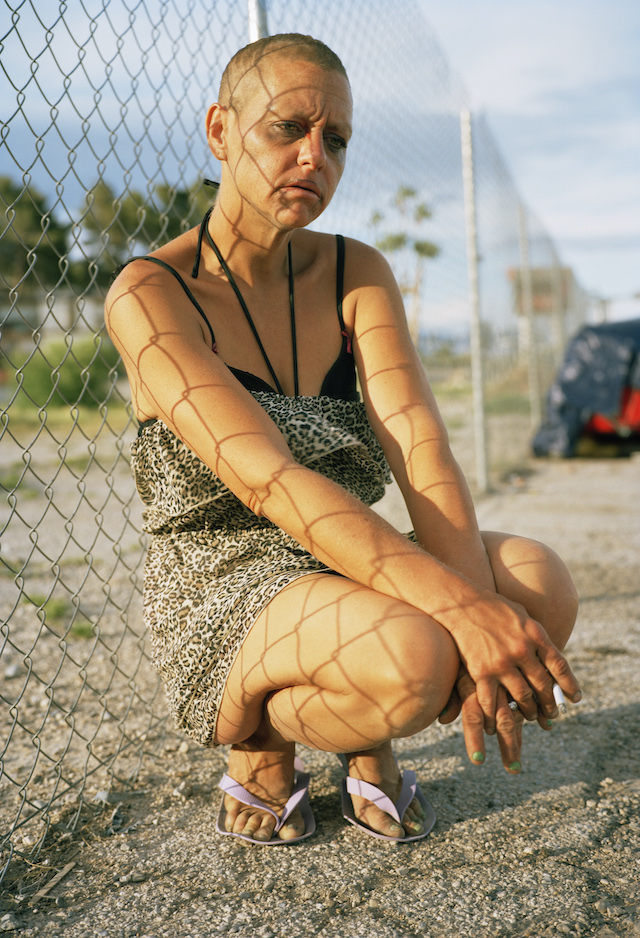
In the spring of 2016, Danish photographer Thilde Jensen met Reine and Lost, two homeless men who lived under a highway in Syracuse, New York. Their openness and enjoyment for being photographed inspired Thilde to start work on her long-term project documenting homelessness in America – which is something that she holds personally having “survived living outside in a tent in the woods” due to a serious illness. Now part of an exhibition named I AM NOT INVisible held at the Martin Parr Foundation from 16 September to 19 December this year, the work journeys from Gallup to New Mexico, Las Vegas to New Orleans. Below, I chat to Thilde about her reasons for starting the project, the demise of her own American dream and what it’s really like to be homeless in the country.
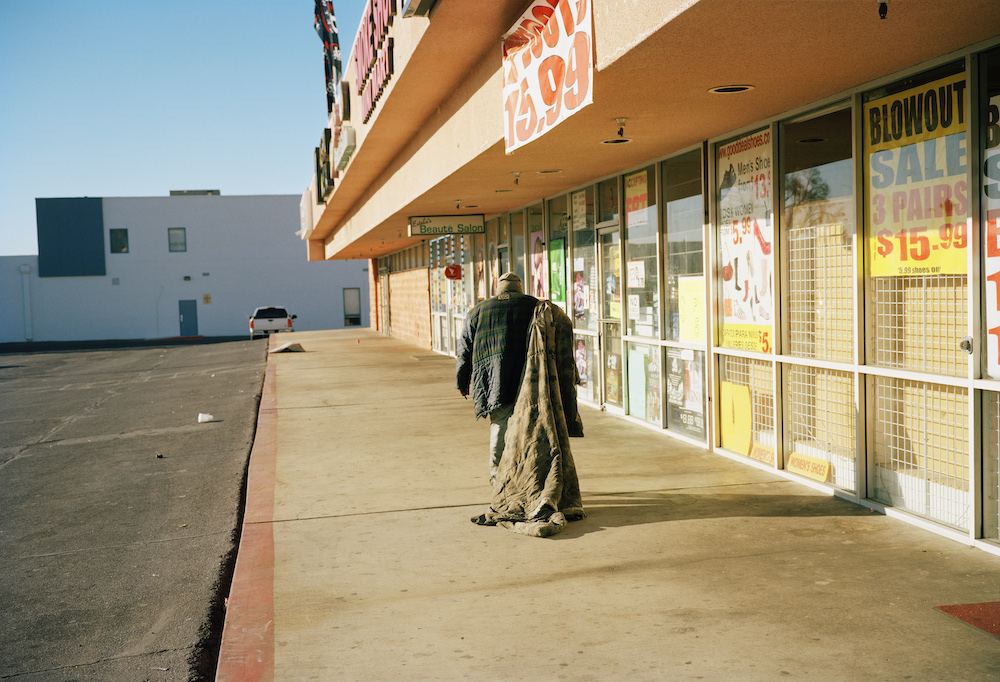
Can you tell me about yourself and how you came into photography?
I grew up in Denmark and my first love was with theatre and film, which led me to photography and photo books. I realised that a series of still images could convey a narrative and allowed for a much more personal artistic process, compared to the big productions involved in both theatre and film. Back in 1997 when I was a young photo student, I decided to move to New York City. Soon I fell in love, got married and ended up working and learning from some of the best in art and documentary photography.
Unfortunately, my American dream quickly came crashing down when I found myself severely sick from an unknown affliction. Everything fell apart – my marriage and my career – as my immune system was crashing. My body was suddenly not able to deal with the vast chemical overload of our modern world. I had to leave my home in the city that I loved, as it had become a toxic war zone for me. Over the first few years, I survived living outside in a tent in the woods or simply sleeping under open sky, while wearing a respirator whenever I was going into public areas. This, at a time before masks were commonplace facial coverings, made me feel like a freak and I lived a life of deep isolation. I was lucky to have support and not end up in endless homelessness as others who were less fortunate.
This painful and nightmarish experience became the subject of my first photo book The Canaries about Environmental Illness, published in 2013. While working on this project, and after seven years of struggling with hypersensitivity, I was lucky to recover enough to slowly start photographing on the street again. A few years later and I was fortunate to receive a Guggenheim Fellowship to travel across the country photographing in different homeless communities. The end result being the photo book I AM NOT INVisible, published in late 2019.
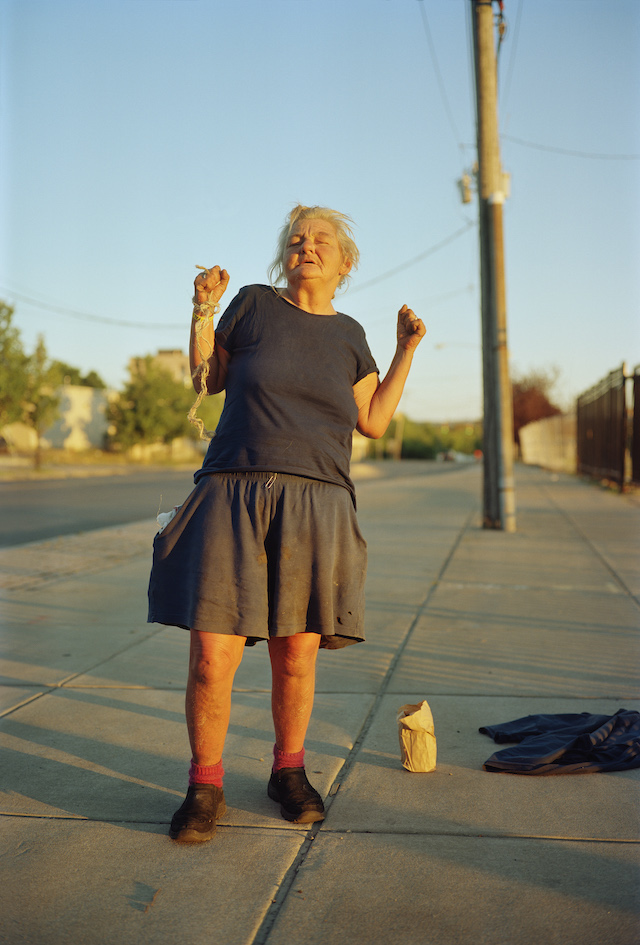
What first inspired you to start documenting homelessness in America?
My own experience of being forced to live outside and knowing that, even though I had worked hard and made a decent living, there was no American safety net to catch me when I got sick.
What stories are you hoping to share throughout I AM NOT INVisible?
While photographing homelessness in America, I met so many wonderful people, many of them with life stories so full of trauma and neglect it was hard to believe they had made it this far. Being a photographer, my talent is to make the people I spend time with feel seen – to make them visible. I think the worst thing we can do to each other is to look the other way and thereby make the people pushed out invisible, non-existent. I also think it is important that we dare to look at reality, as complex as it may be, up close and in an unfiltered way. With my camera, I was hoping to be an honest mirror to the often brutal reality I was encountering on the street. I wasn’t so much looking to tell anyone’s individual story, but more so trying to create a tapestry of voices and experiences from the homeless streets of America.
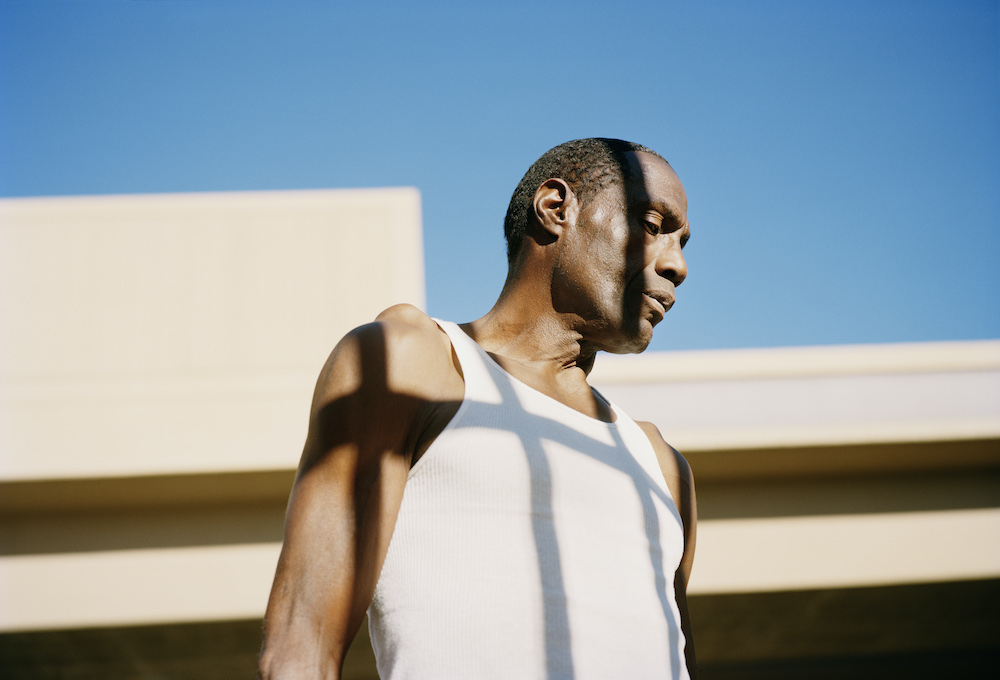
You first met Reine and Lost at the beginning of the project, and they were very open to sharing their lives. What did you learn about them both, and how did you want to portray them in your imagery?
I met Reine and Lost in the early Spring 2016 in Syracuse, New York, after they had survived yet another brutally cold winter huddled together on a concrete ledge right under the highway. Reine and Lost were close to me in age and were both struggling with alcohol addiction. They seemed to enjoy my company, and after spending time with them I was soon welcomed with my camera in most of the homeless community in Syracuse. Of course some people didn’t want to be photographed and I’m always very respectful around asking for permission. I learned early on that, for me, picture making is a collaborative process. If a person is unwilling it never makes for good pictures – it feels totally wrong to take pictures without permission. I’m a lousy street photographer in that way but my interest is in creating trust and an emotional connection. I feel my images more than I see them, I guess. Unfortunately Lost died some months after I started the project, which is often the sad outcome of long-term homelessness. Lost had been living most of his adult life on the street.
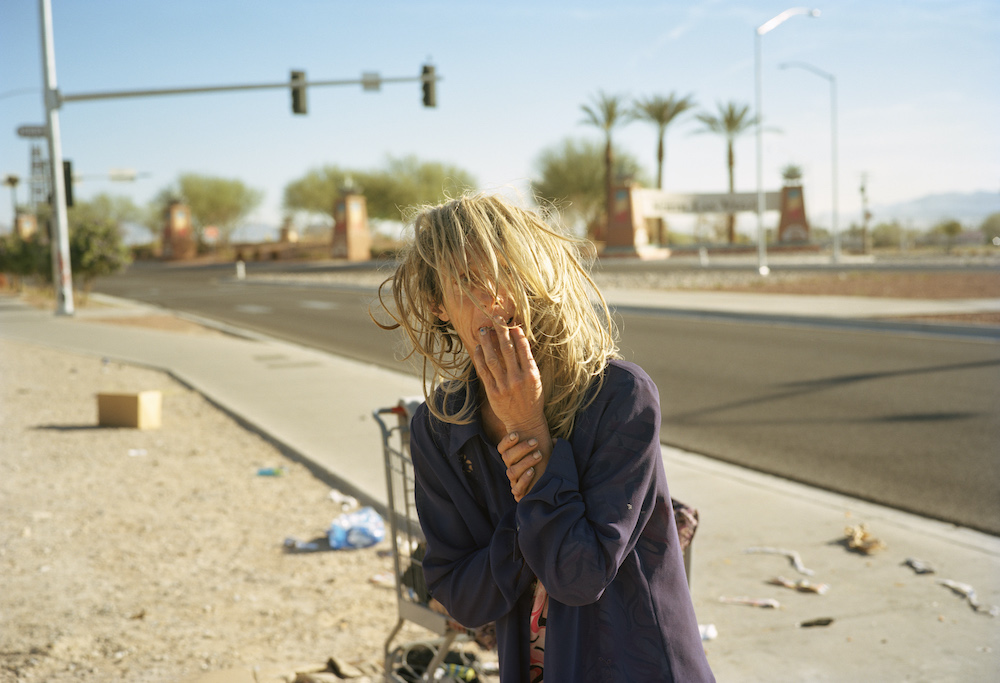
Can you share any anecdotes from working on the series?
A lot of the images are from Las Vegas, where I had never visited before. I drove across the country and found the homeless community in north Las Vegas to be heartbreakingly enormous. This is not the Vegas you see if you go as a tourist. At first, it was much too overwhelming to see so many people living on the street and it took some time to make enough connections there to feel safe to walk around with my camera.
One morning, as I’m talking to people and taking photographs, Cindy, a woman my own age, asked me if she could pay me to photograph her. I of course refused any payment but gladly turned my camera to her, and that was the beginning of an intense connection which evolved over the following two years while photographing in Las Vegas. Her unique experience of reality was addictive, her mind would run wild and, on a good day, she was the funniest person to be with until suddenly the darkness and the voices overtook her. One of the last times I saw her she told me I better go now because she was afraid I would otherwise dissolve into the wall. I miss her; she was quite special. People on the street told me that she had arrived there some years back as she just got out of jail due to some petty theft charges. She had looked beautiful and was totally sane, but soon she had been taken advantage of. “This is what the street will do to you”, they said.
I met many people who not too long ago had driven past the homeless, going to work, never thinking this could be them and here they were. Loosing their identity, their self worth, unsheltered, vulnerable to sexual assault and violence. Sleepless nights with drugs and alcohol to dull the pain, slowly the thin veil that separates you from madness starts slipping, as your reality no longer makes sense or becomes too painful to inhabit.
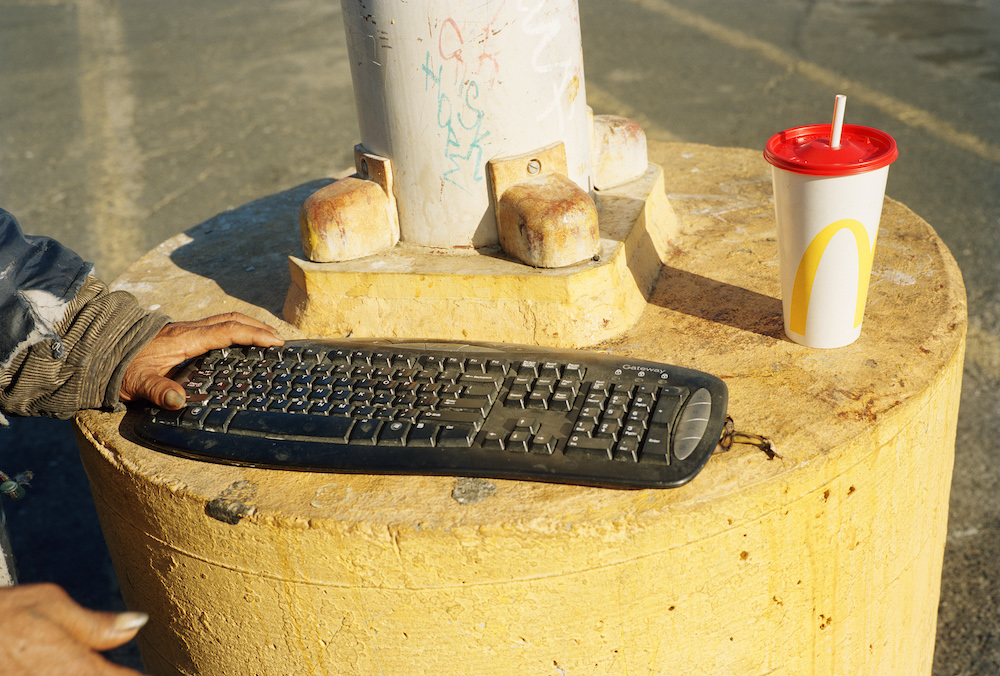
How do you hope your audience will respond to the work?
As an artist and documentary photographer, I think the end goal is to always create dialogue. If the viewer feels touched, like I have been, by the people in the pictures or even provoked or unsettled, then I’m happy. I also hope that people can see themselves in these pictures and maybe realise that we need to take better care of each other. The truth is that we all have the same need for love, food and shelter and would likely all benefit from a society that is more supportive and loving.
Will you continue working on this topic?
I had just started photographing for my next photo project Tomorrow, which is about the future – but then Covid-19 hit so it’s been on pause. Instead, I have been taking a deep-dive into the natural world under the premise of recreating paradise in a sustainable manner; trying to create a model for how we can live in balance with nature. To do this, I have undertaken a scientific journey looking at and understanding the microbiological magic right under our feet that makes up the fertility and health of anything living on this planet. Though after spending many months looking at the alien lifeforms that inhabit our soils, I feel eager to get back to photographing people again. I’m trying to figure out what kind of future we can dream up together.
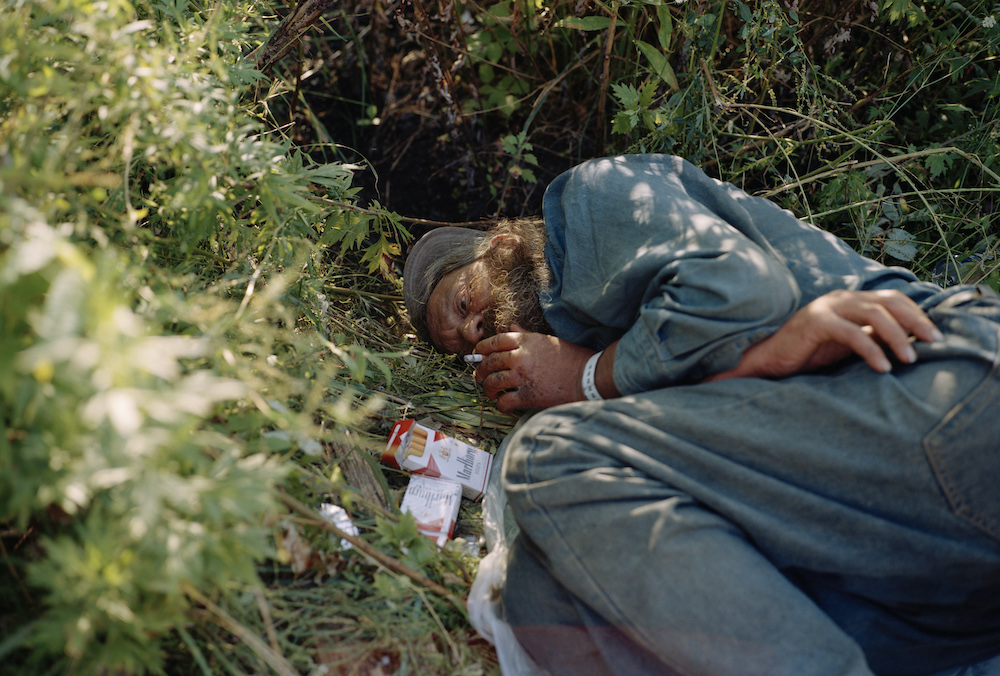
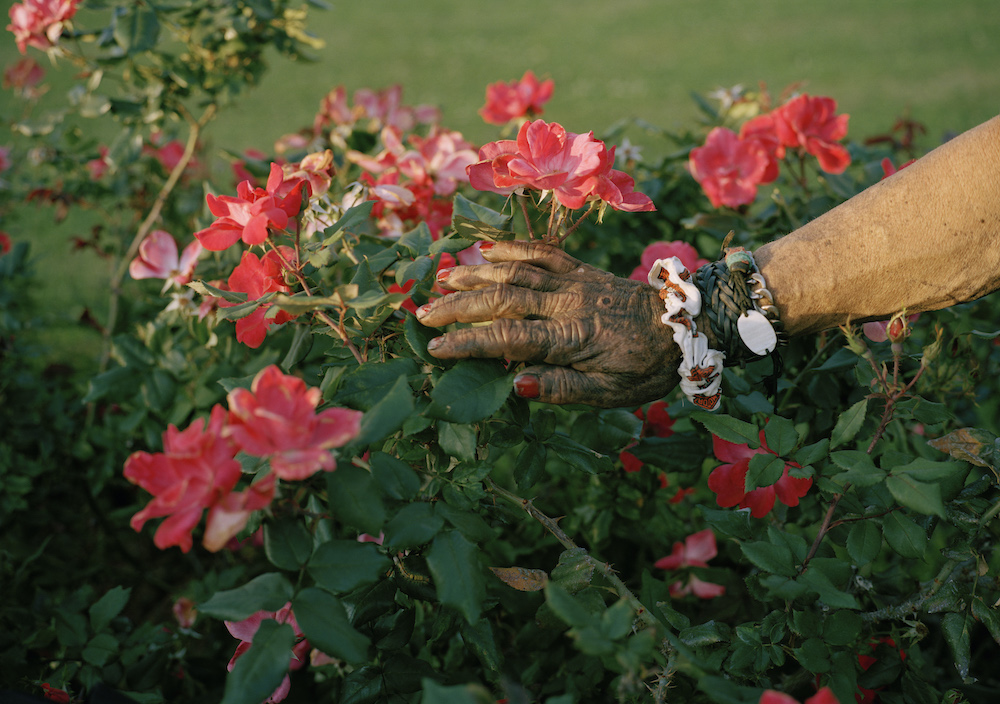
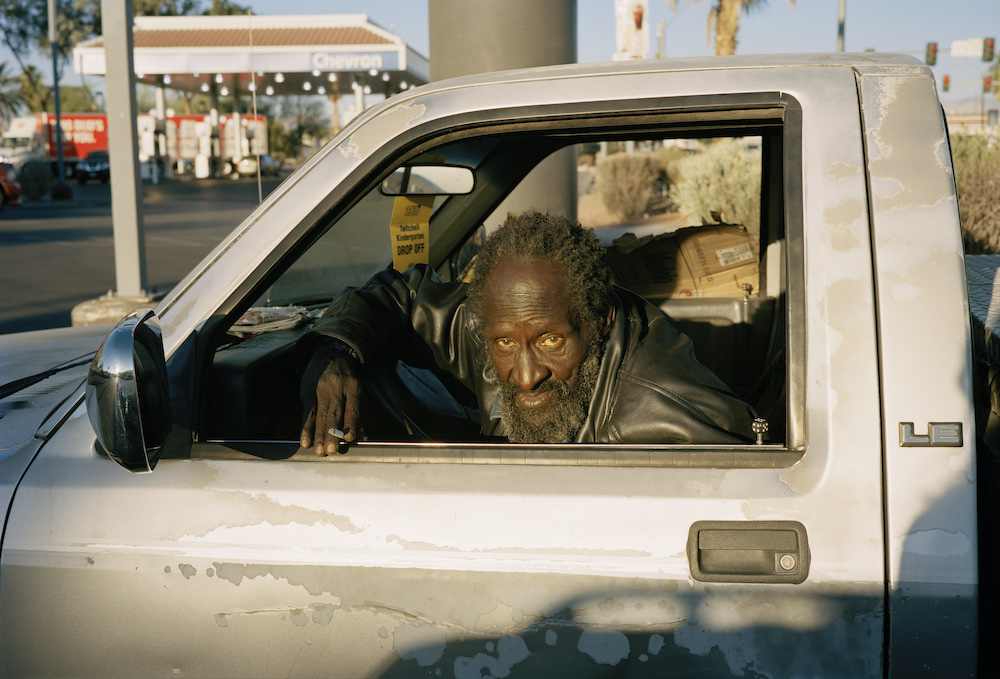
I AM NOT INVisible by Thilde Jensen is on show at the Martin Parr Foundation from 16 SEPT – 19 DEC 2021, and is part of Bristol Photo Festival